Phospho-Rasputin Stabilization by Sec16 Is Required for Stress Granule Formation upon Amino Acid Starvation
- PMID: 28746877
- PMCID: PMC6064189
- DOI: 10.1016/j.celrep.2017.06.042
Phospho-Rasputin Stabilization by Sec16 Is Required for Stress Granule Formation upon Amino Acid Starvation
Erratum in
-
Phospho-Rasputin Stabilization by Sec16 Is Required for Stress Granule Formation upon Amino Acid Starvation.Cell Rep. 2017 Aug 29;20(9):2277. doi: 10.1016/j.celrep.2017.08.054. Cell Rep. 2017. PMID: 28854374 No abstract available.
Abstract
Most cellular stresses induce protein translation inhibition and stress granule formation. Here, using Drosophila S2 cells, we investigate the role of G3BP/Rasputin in this process. In contrast to arsenite treatment, where dephosphorylated Ser142 Rasputin is recruited to stress granules, we find that, upon amino acid starvation, only the phosphorylated Ser142 form is recruited. Furthermore, we identify Sec16, a component of the endoplasmic reticulum exit site, as a Rasputin interactor and stabilizer. Sec16 depletion results in Rasputin degradation and inhibition of stress granule formation. However, in the absence of Sec16, pharmacological stabilization of Rasputin is not enough to rescue the assembly of stress granules. This is because Sec16 specifically interacts with phosphorylated Ser142 Rasputin, the form required for stress granule formation upon amino acid starvation. Taken together, these results demonstrate that stress granule formation is fine-tuned by specific signaling cues that are unique to each stress. These results also expand the role of Sec16 as a stress response protein.
Keywords: Drosophila S2 cells; Rasputin; Sec16; amino acid starvation; arsenite; elF2 alpha; phosphorylation; protein stabilization; protein translation; protein transport in the secretory pathway; stress granules; stress response.
Copyright © 2017 The Author(s). Published by Elsevier Inc. All rights reserved.
Figures
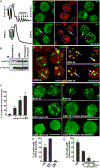
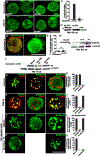
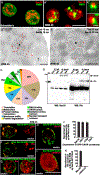
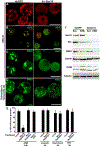
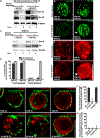
Similar articles
-
Phospho-Rasputin Stabilization by Sec16 Is Required for Stress Granule Formation upon Amino Acid Starvation.Cell Rep. 2017 Aug 29;20(9):2277. doi: 10.1016/j.celrep.2017.08.054. Cell Rep. 2017. PMID: 28854374 No abstract available.
-
The RNA-Binding Protein Rasputin/G3BP Enhances the Stability and Translation of Its Target mRNAs.Cell Rep. 2020 Mar 10;30(10):3353-3367.e7. doi: 10.1016/j.celrep.2020.02.066. Cell Rep. 2020. PMID: 32160542
-
ERK7 is a negative regulator of protein secretion in response to amino-acid starvation by modulating Sec16 membrane association.EMBO J. 2011 Aug 16;30(18):3684-700. doi: 10.1038/emboj.2011.253. EMBO J. 2011. PMID: 21847093 Free PMC article.
-
Sec16 in conventional and unconventional exocytosis: Working at the interface of membrane traffic and secretory autophagy?J Cell Physiol. 2017 Dec;232(12):3234-3243. doi: 10.1002/jcp.25842. Epub 2017 Apr 27. J Cell Physiol. 2017. PMID: 28160489 Review.
-
Rasputin a decade on and more promiscuous than ever? A review of G3BPs.Biochim Biophys Acta Mol Cell Res. 2019 Mar;1866(3):360-370. doi: 10.1016/j.bbamcr.2018.09.001. Epub 2018 Sep 5. Biochim Biophys Acta Mol Cell Res. 2019. PMID: 30595162 Free PMC article. Review.
Cited by
-
The transcriptional response to oxidative stress is independent of stress-granule formation.Mol Biol Cell. 2022 Mar 1;33(3):ar25. doi: 10.1091/mbc.E21-08-0418. Epub 2022 Jan 5. Mol Biol Cell. 2022. PMID: 34985933 Free PMC article.
-
Novel Components of the Stress Assembly Sec Body Identified by Proximity Labeling.Cells. 2023 Mar 30;12(7):1055. doi: 10.3390/cells12071055. Cells. 2023. PMID: 37048128 Free PMC article.
-
Cellular stress leads to the formation of membraneless stress assemblies in eukaryotic cells.Traffic. 2019 Sep;20(9):623-638. doi: 10.1111/tra.12669. Epub 2019 Jul 30. Traffic. 2019. PMID: 31152627 Free PMC article. Review.
-
The TRAPP complex mediates secretion arrest induced by stress granule assembly.EMBO J. 2019 Oct 1;38(19):e101704. doi: 10.15252/embj.2019101704. Epub 2019 Aug 20. EMBO J. 2019. PMID: 31429971 Free PMC article.
-
Modulation of the secretory pathway by amino-acid starvation.J Cell Biol. 2018 Jul 2;217(7):2261-2271. doi: 10.1083/jcb.201802003. Epub 2018 Apr 18. J Cell Biol. 2018. PMID: 29669743 Free PMC article. Review.
References
MeSH terms
Substances
Grants and funding
LinkOut - more resources
Full Text Sources
Other Literature Sources
Molecular Biology Databases
Miscellaneous

